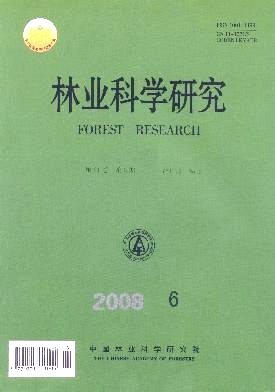Forest Volume Estima tion Method for Sma ll Area s Ba sedon k-NN and Landsa t Da ta
-
1.
Research Institute of Forest Resource Information Techniques, CAF, Key Laboratory for Forest Remote Sensing and InformationTechniques of State Forestry Administration, Beijing 100091, China
-
2.
Academy of Forest Inventory and Planning,State Forestry Administration, Beijing 100714, China
-
Received Date:
2007-08-03
Accepted Date:
2008-02-26
-
Abstract
The effectiveness of k-Nearest Neighbour ( k-NN ) for forest parameters estimation of small area wasevaluated using permanent forest p lot data of national forest inventory (NFI) , Landsat TM data and landuse map datain a test site located in J ilin Province. Itwas found that the bias of the mean volume per unit area estimated using k-NN was under 1. 5 m3 ·hm-2 , and the relative rootmean square error (RMSE′) was less than that of the conventionallineal regressmethod based on the relationship between Landsat ETM + greenness index and forest volume density; k-NN could be used to estimate forest parameters of small unit in the scale of counties or districts, whose performancecould be better than that of traditional population based statistic method that only utilizes forest p lot data.
-

-
References
|
[1]
|
赵宪文. 林业遥感定量估测[M]. 北京:中国林业出版社, 1997
|
|
[2]
|
游先祥. 森林资源调查、动态监测、信息管理系统的研究[M]. 北京:中国林业出版社, 1995
|
|
[3]
|
李崇贵. 用非线性理论研究以“3S”为基础的森林蓄积定量估测[D]. 北京:中国林业科学研究院, 2005
|
|
[4]
|
Tomppo E. Satellite imagery-based national inventory of Finland[J]. InternationalArchives of Photogrammetry and Remote Sensing,1991, 28 (7-1) : 419 - 424 |
|
[5]
|
KatilaM, Tomppo E. Calibration of small-area estimates formap errors in multisource forest inventory[J]. Canadian Journal of ForestResearch, 2000, 30: 1329 - 1339 |
|
[6]
|
Katila M, Tomppo E. Selecting estimation parameters for FinnishMultisource National Forest Inventory[J]. Remote Sensing of Environment, 2001, 76: 16 - 32 |
|
[7]
|
Katila M, Tomppo E. Stratification by ancillary data in the multisource forest inventories emp loying k-nearest-neighbour estimation[J]. Canadian Journal of Forest Research, 2002, 32: 1548 - 1561 |
|
[8]
|
Labrecque S, Fournier R A, Luther J E, et al. A comparison of fourmethods to map biomass from Landsat-TM and inventory data in western Newfoundland [J]. Forest Ecology and Management, 2006,226: 129 - 144 |
|
[9]
|
Lapp i J. Forest inventory of small areas combining the calibration estimator and a spatial model [J]. Canadian Journal of Forest Research, 2001, 31 (9) : 1551 - 1560 |
|
[10]
|
Franco-Lopez H, Ek A R, BauerM E. Estimation and mapp ing offorest stand density, volume, and cover type using the k-nearestneighborsmethod[J]. Remote Sensing of Environment, 2001, 77(3) : 251 - 274 |
|
[11]
|
KatilaM. Emp irical errors of small area estimates from the Multisource National Forest Inventory in eastern Finland[J]. Silva Fennica, 2006, 40 (4) : 729 - 742 |
|
[12]
|
McRoberts R E. NelsonM D, WendtD G. Stratified estimation offorest area using satellite imagery, inventory data, and the k-nearestneighbours technique[J]. Remote Sensing of Environment, 2002,82 (2 - 3) : 457 - 468 |
-
-
Proportional views

-





 DownLoad:
DownLoad: